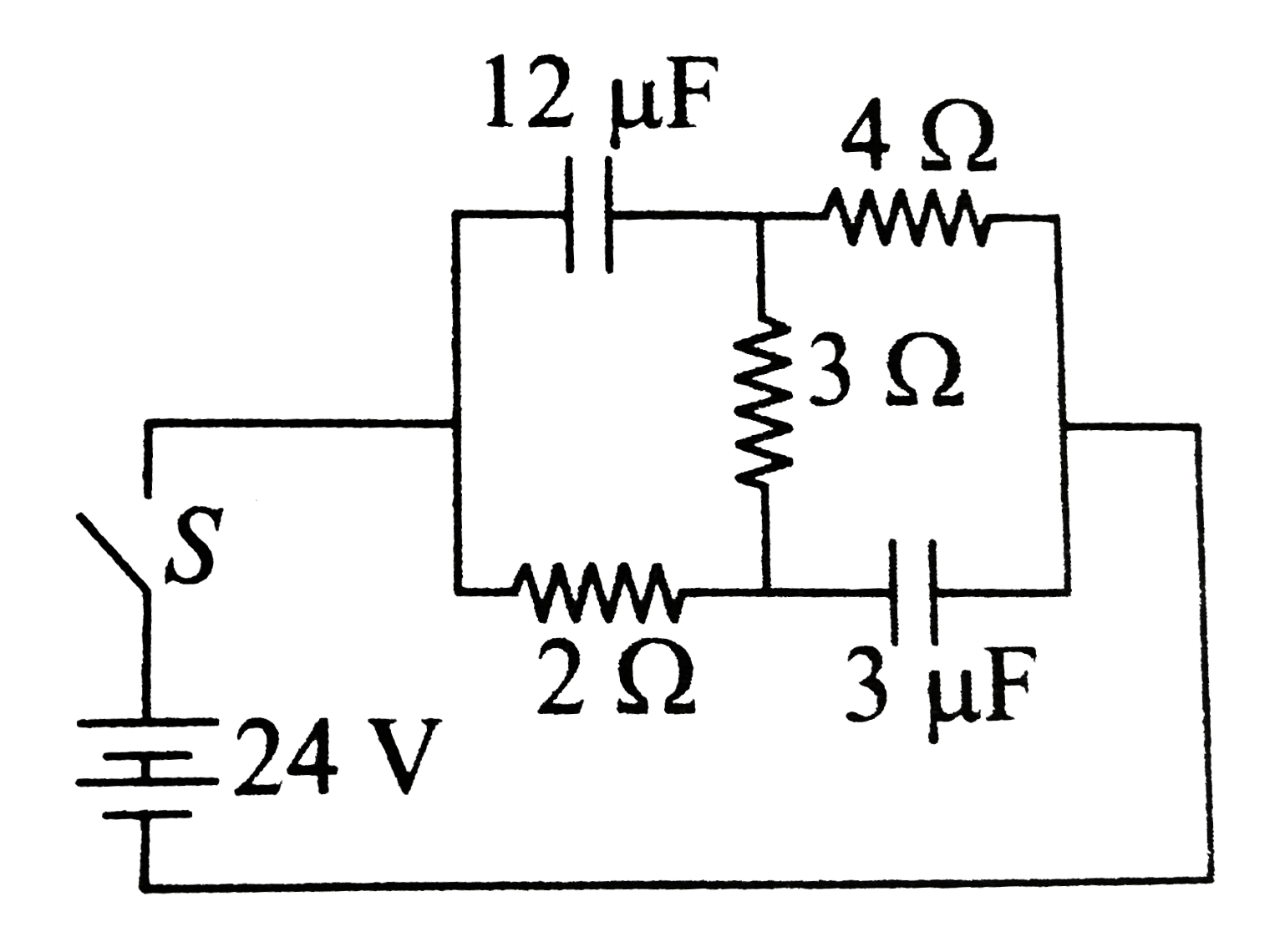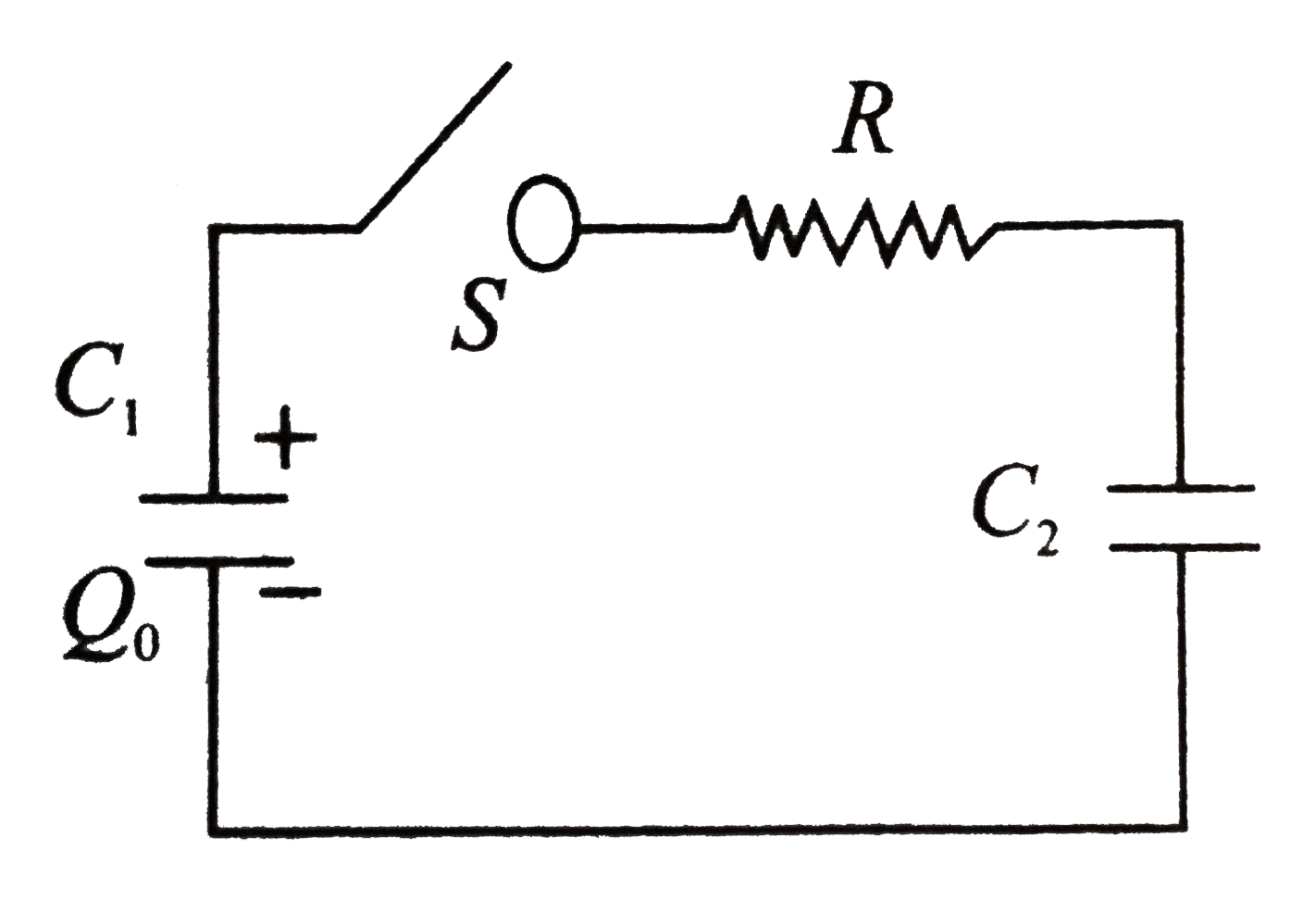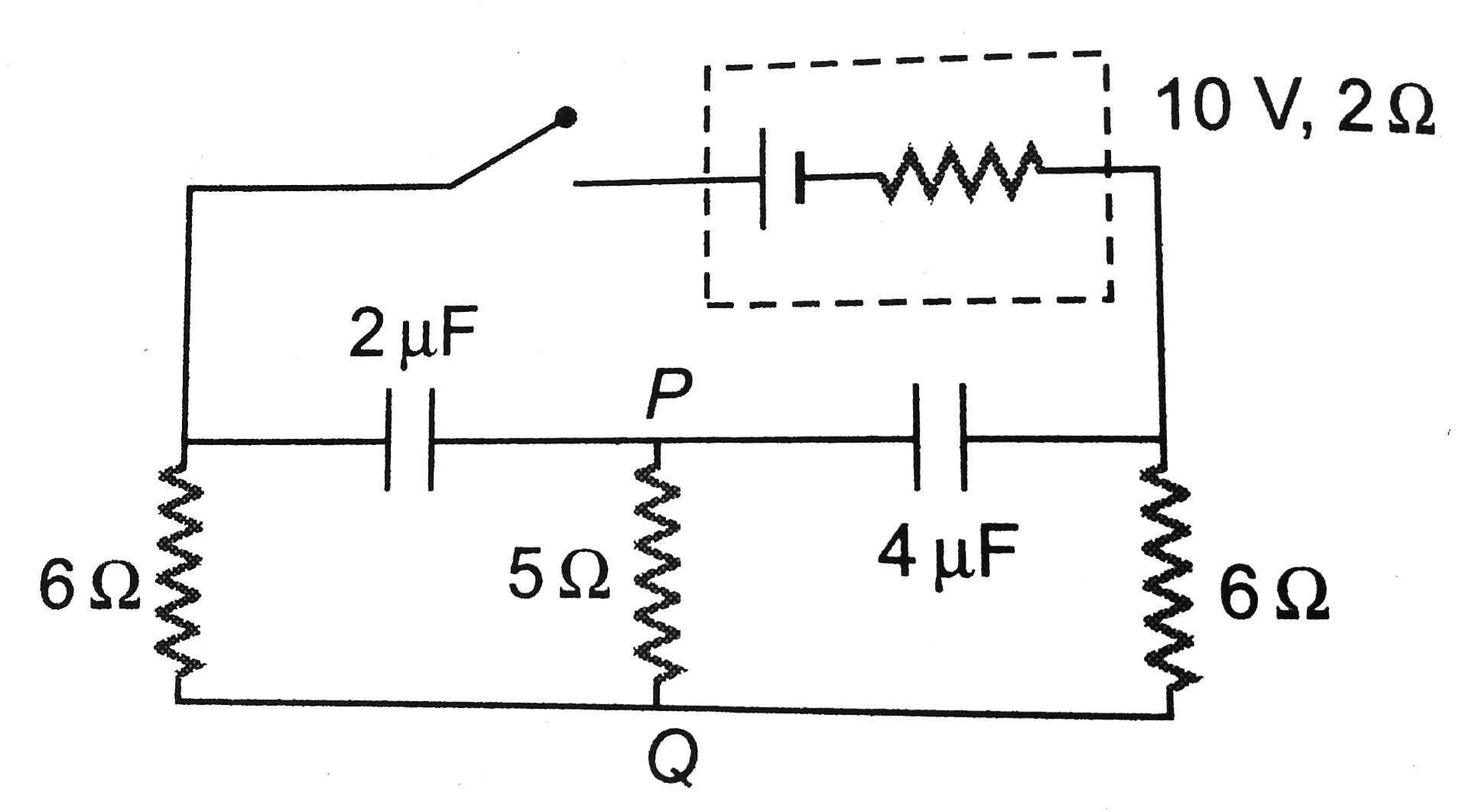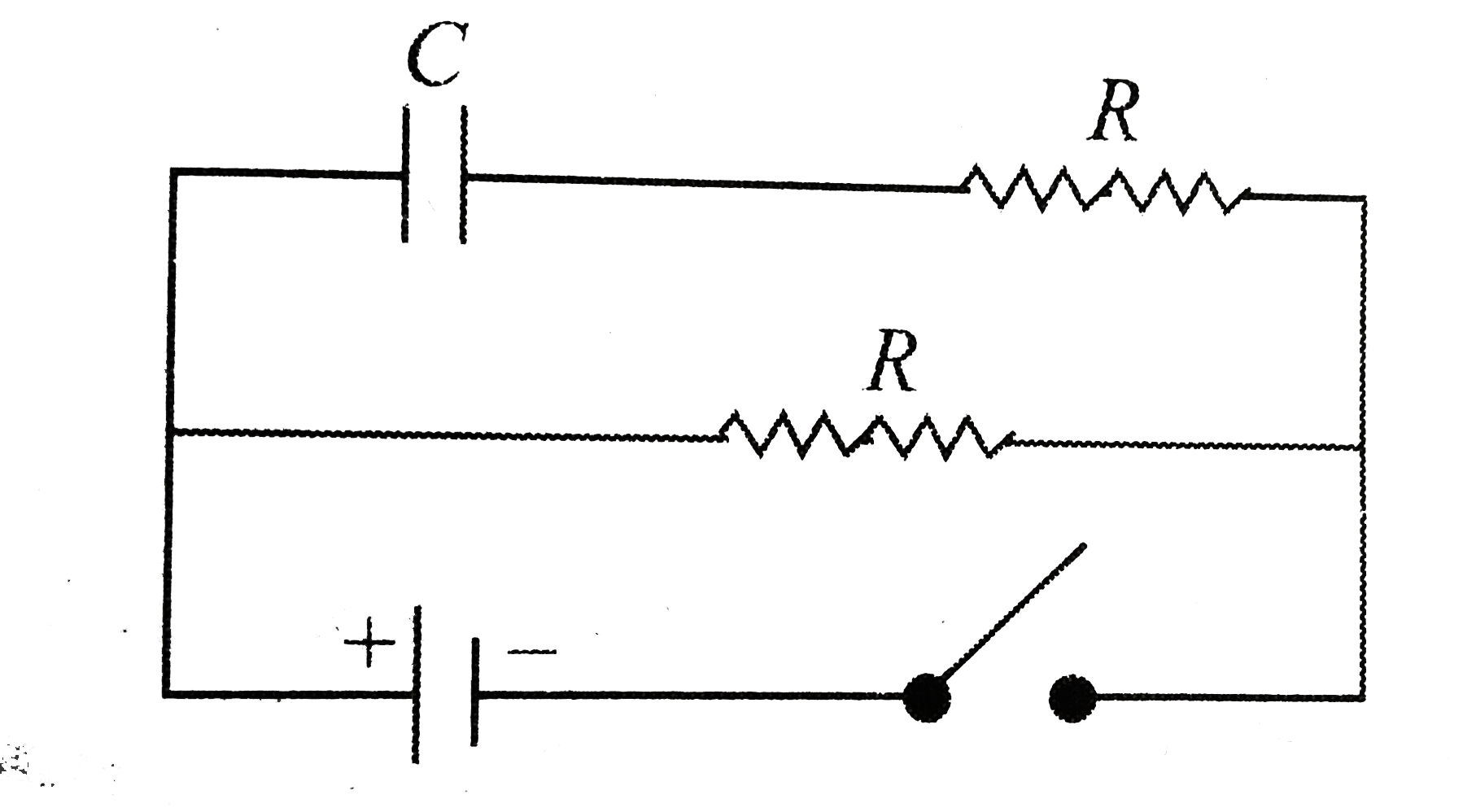Figure shows three circuits, each consisting of a switch and two capacitors initially charged as indicated. After the switch has been closed, in which circuit (if any) will the charges on the left hand capacitor (i) increase (ii) decrease (iii) remain same ?

1 remains unchanged, 2 increases , 3 decreases
Topper's Solved these Questions
- ELECTROSTATICS AND CURRENT ELECTRICITY BOOK - CBSE COMPLEMENTARY MATERIALCHAPTER - ELECTROSTATICS AND CURRENT ELECTRICITY EXERCISE - LONG ANSWER QUESTIONS
6 Videos
- ELECTRONIC DEVICES BOOK - CBSE COMPLEMENTARY MATERIALCHAPTER - ELECTRONIC DEVICES EXERCISE - NUMERICALS
7 Videos
- SAMPLE QUESTION PAPER 2019BOOK - CBSE COMPLEMENTARY MATERIALCHAPTER - SAMPLE QUESTION PAPER 2019EXERCISE - Section C
19 Videos
Similar Questions
Find out current in the circuit and charge on capacitor which is initially uncharged in the following situations

Just after the switch is closed
View SolutionThe following two questions refer to the circuit shown. Assume that the capacitors are initially uncharged.

After the switch has been closed for a long time, how much charge is on the positive plate of the 3μF capacitor?
View Solution
Knowledge Check
Figure shows three circuits, each consisting of a switch and two capacitors, initially charged as indicated in the figure. In which circuit the charge on the left hand capacitor will change after the closing of the switch :
 A1B2C3DAll
A1B2C3DAllThe following two questions refer to the circuit shown. Assume that the capacitors are initially uncharged.

After the switch has been closed for a long time, how much charge is on the positive plate of the 3μF capacitor?A24μCB32μCC56μCD72μCIn the circuit shown, the capacitor C1 is initially charged with charge q0. The switch S is closed at time t = 0 . The charge on C2 after time t is
 Aq0C1C1+C2(1−e−t(C1+C2)C1C2R)Bq0C2C1+C2(1−e−t(C1+C2)C1C2R)Cq0C1C1+C2(1−e−tC2R)Dq0C2C1+C2(1−e−tC2R)
Aq0C1C1+C2(1−e−t(C1+C2)C1C2R)Bq0C2C1+C2(1−e−t(C1+C2)C1C2R)Cq0C1C1+C2(1−e−tC2R)Dq0C2C1+C2(1−e−tC2R)
In the circuit shown, the capacitor C1 is initially charged with charge q0. The switch S is closed at time t = 0 . The charge on C2 after time t is

View SolutionFind out current in the circuit and charge on capacitor which is initially uncharged in the following situations

After a long time when switch was closed.
View SolutionIn the circuit shown in figure, the capacitors are initially uncharged. The current through resistor PQ just after closing the switch is

View SolutionIn the circuit shown in fig. when the switch is closed, the capacitor charges with a time constant

View SolutionIn the circuit shown in figure, the capacitors are initially uncharged. The current through resistor PQ just after closing the switch is

View Solution
